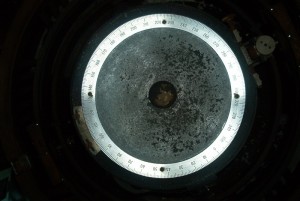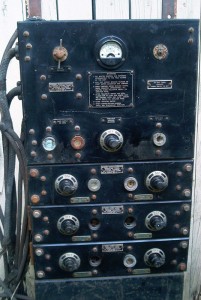Early mariners did not have a compass. They had to rely on the sun in daytime and the stars at night to determine direction.
The Chinese were the first to make use of a compass. This was magnetic compass, which points to the earth’s magnetic North pole. The material used was lodestone, a magnetic ore of iron. Magnetic compasses, now made using magnetized steel, are widely used.
True North and magnetic North very rarely coincide. Nautical charts show the difference between magnetic North and true North.
A gyro compass operates by reacting to earth’s rotational movement and points to true north. Several repeaters are used aboard ships to provide a true bearing, dial at the steering station, the “wings” on either side of the wheelhouse, possibly the captain’s quarters and engine room. At the “wing” repeaters a bearing circle can be used to determine direction to buoys, a landmark and other vessels. From buoys and landmarks a plot can be made of own position. Gyrocompass data are also sent to navigational aids, such as radar ARPA, radio direction finder, Loran and Transit Satellite Navigator to provide true bearing data.
Dodge Division of Chrysler Corporation for Sperry – Mark 14
Manufactured by: Dodge Division of Chrysler Corporation for Sperry
Model: Mark 14
Repeater Panel
The gyrocompass repeater panel provides the power to drive the repeaters. Each of the repeaters can be switched on or off at the panel. In addition, each of the repeaters is fused should trouble occur in one of the repeaters or cables leading to it (perhaps a short circuit). The fuse will blow, isolating the faulty repeater, so that the remaining repeaters are not affected.
Crysler Corporation for Sperry
Manufactured by: Chrysler Corporation for Sperry


